We may earn a commission when you click on the affiliate links in this post.
Make perfect Sushi Rice at home with this simple, authentic recipe! With just 4 basic ingredients, you’ll get that ideal sticky texture and balanced flavor—just like the rice from your favorite sushi restaurant. Easy, foolproof, and essential for homemade sushi!
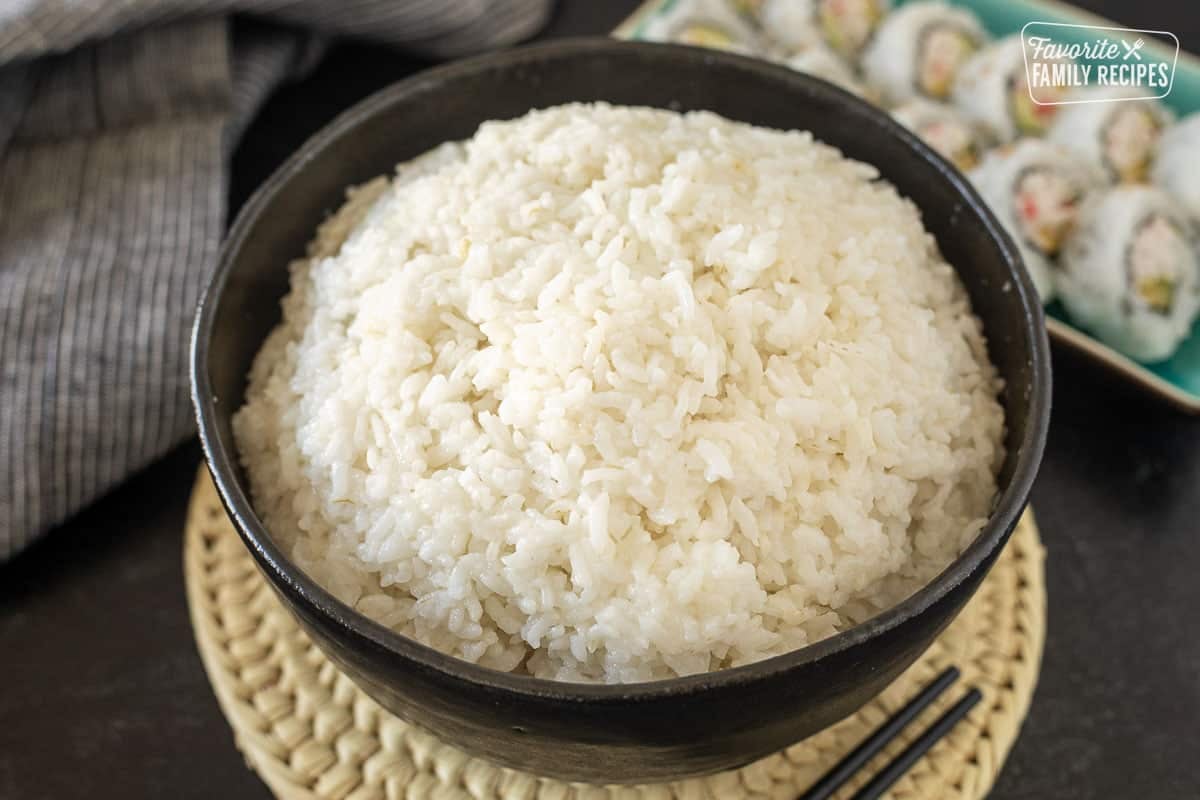
5 Star Reviews ⭐️⭐️⭐️⭐️⭐️
“I find this recipe the best I have tried so far. Previous tried recipes made the rice too vinegary or too wet. This recipe works. Two thumbs up from my son.” – Jay
“Yesterday was the fist time I made sushi at home. I followed this recipe and it was awesome! The best sushi rice I have ever eaten and it was so easy to make and work with.” – Karin
“This was my first time making sushi rice and it turned out absolutely perfectly using your recipe! Thank you so much!” – Raquel
The Best Sushi Rice for More than Just Sushi
If you’ve ever wanted to make perfect sushi rice at home, you’re in the right place.
I’ve fallen in love with this rice, not just for sushi but for all sorts of dishes. Whether I’m making California rolls, musubi, a sushi bake, Spam musubi bowls, or just want a lightly seasoned Japanese-style rice as a side dish, this recipe is my go-to every time. It’s flavorful, perfectly sticky, and surprisingly simple to make.
Once you see how easy it is to make authentic-tasting sushi rice at home, you’ll want to make it every day (okay, maybe not every day—but you get the idea!).
Happy sushi making!
🩷 Erica
Key Ingredients
You won’t believe how simple it is to make restaurant quality sticky rice at home with just four simple ingredients! Here’s all you need:
- Uncooked Rice – Look for a bag that says “sushi rice” on the label. I have found this at most grocery stores either in the Asian food aisle or with the pasta and rice. Popular brands include Nishiki or Kokuho Rose. If you can’t find sushi rice, Calrose rice is a decent substitute. I’ve used it many times, and while it’s not perfect, it’s a solid alternative.
- Sushi Rice Seasoning – You can use “sushi vinegar” to season your rice or make your own. To make your own, all you need is some rice vinegar, sugar, and salt. Heat until sugar dissolves and you have perfect homemade sushi vinegar.
- Kombu (optional) – For an even more traditional, umami flavor you can add a 2×2″ square of Kombu (aka dried kelp) to the rice as it is cooking. Kombu is similar to nori (dried seaweed), but thicker and more of an intense flavor. It’s a great way to infuse the rice with even more authentic flavor.
Choosing the Best Rice
The best rice for sushi is, unsurprisingly, called “sushi rice.” It’s a Japanese-style short-grain rice that you can find at Japanese grocery stores or in the Asian food aisle of many supermarkets. If you can’t find it, Calrose rice works in a pinch. Just avoid basmati, Jasmine rice, or any medium or long-grain rice—they’re not sticky enough for sushi and your sushi will fall apart. I can usually find the right rice at the grocery store, but if you can’t find it there, check your local Asian market.
Sushi Rice Seasoning
The key to great sushi rice is in the seasoning. Sushi rice has a distinct taste and texture. It should be slightly sweet, tangy, and savory, with a hint of vinegar. I have found actual “sushi vinegar” at the store but I like our seasoning better! You can make sushi vinegar right at home by simply combining rice vinegar, sugar, and salt. It is literally the exact same thing. No need to spend extra for store-bought sushi vinegar.
Some rices have a deeper umami flavor from kombu (dried kelp) being cooked with the rice, but sometimes kombu can be hard to find. In this recipe we make it optional so it is totally up to you if you want to add it or not.
How to Make Sushi Rice Step-by-Step
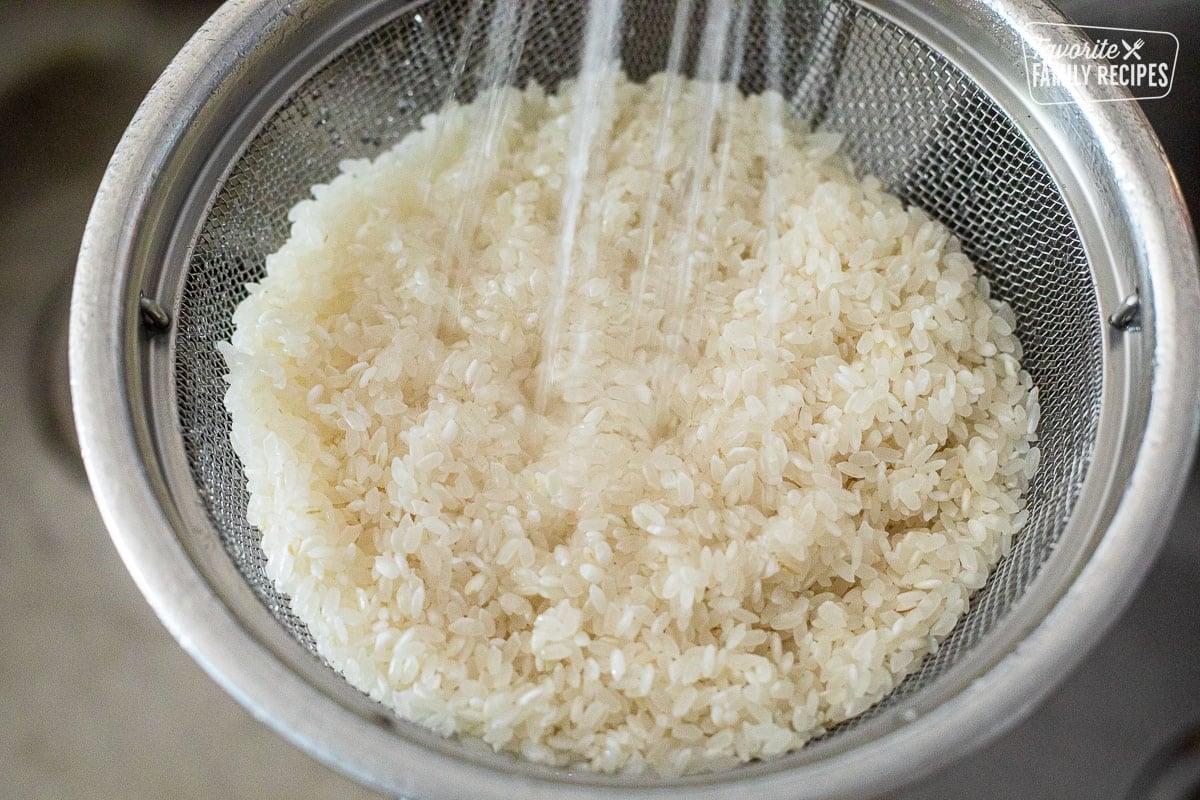
- Rinse the Rice: Rinse the rice in a colander or sieve until the water runs clear, then let it drain for an hour. This step is crucial for the right texture, so don’t skip it!
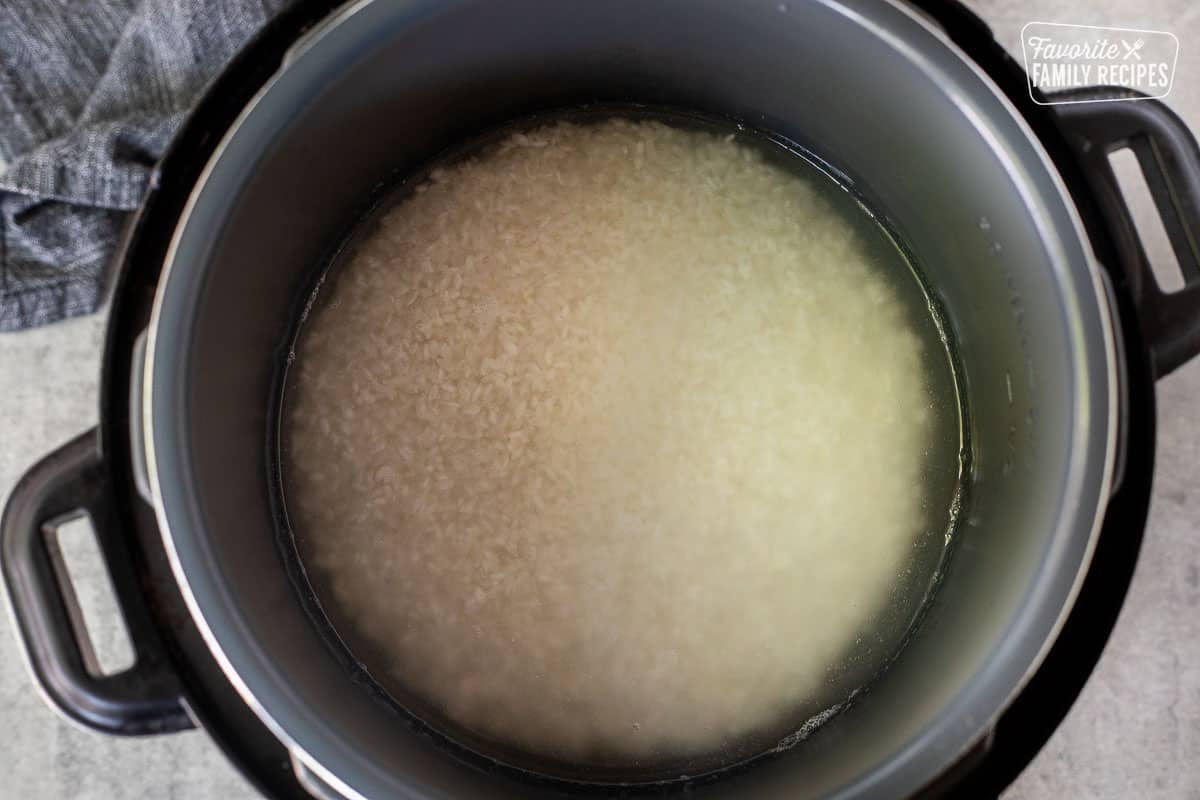
- Cook the Rice: Add rice and water to a rice cooker or large pot. If you are using kombu, add it at this point and allow it to cook with the rice. Cover with a lid and cook according to the recipe instructions. If using an Instant Pot, you can use the “rice” setting or better yet, follow our instructions for Instant Pot Sushi Rice.
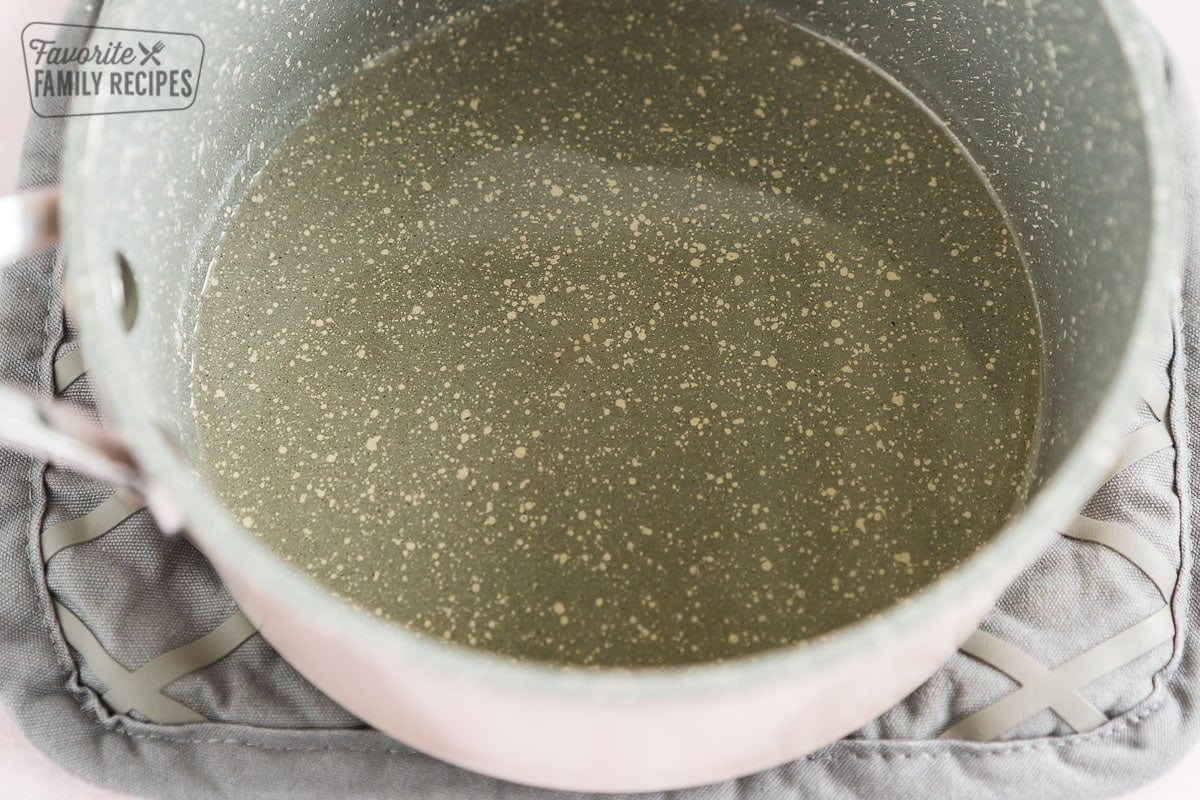
- Prepare the Seasoning: While the rice is cooking, heat rice vinegar, sugar, and salt in a small saucepan over medium heat until the sugar dissolves (but don’t let it boil). Remove from heat and let cool to room temperature. You can also add the ingredients to a small bowl and heat it in the microwave. Just remember to allow it to cool to room temp.
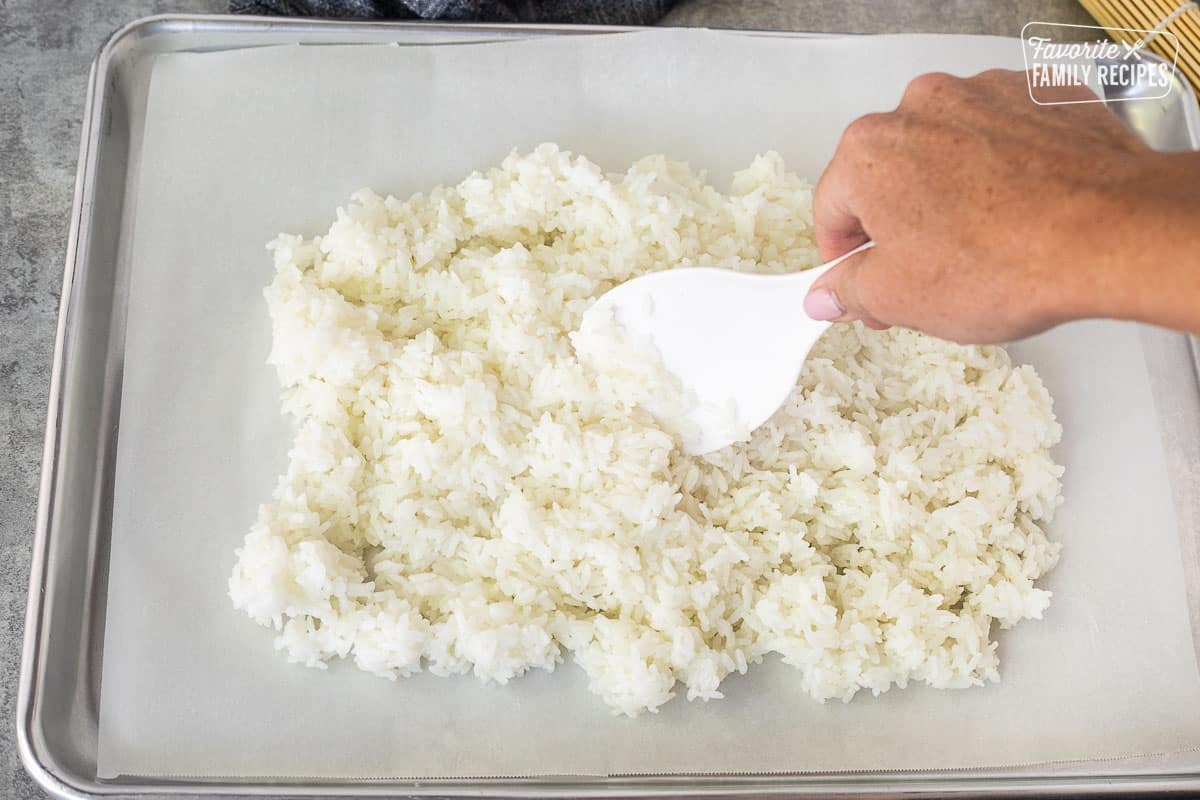
- Season and Cool: When the rice is finished, spread the cooked rice out onto a baking sheet using a wooden spoon or rice paddle. Sprinkle the vinegar mixture over the rice and mix until all the rice is coated. Allow to cool on the baking sheet, flipping every once in a while. As far as texture goes, the rice itself should be tender, yet firm enough to hold its shape when molded into sushi or a ball.

Tips and Troubleshooting
Rinse the rice thoroughly – Rinsing the rice before cooking removes excess starch, which can make the rice overly sticky or gummy. Rinse the rice under cold water in a fine mesh strainer or bowl, swishing it with your hand, until the water runs mostly clear (usually 3–4 rinses).
Let the rice rest – Resting the rice after it cooks helps the rice finish steaming and evenly distributes moisture. After cooking, keep the lid on and let the rice sit for 10–15 minutes before fluffing or seasoning.
Avoid rice clumps when seasoning – Stirring too vigorously or seasoning when the rice is too hot can cause the rice to clump. Use a gentle slicing/folding motion with a paddle or wooden spoon to mix in the seasoning. Let the rice cool for a minute or two before adding the vinegar mixture.
Frequently Asked Questions
The word sushi literally translates to ‘sour flavor.’ Sushi rice is seasoned with vinegar, sugar, and salt, giving it a very subtle sweet and sour flavor.
Cooked sushi rice is best enjoyed fresh, but it can be stored in an airtight container in the refrigerator for up to 3 days. Keep in mind that it may dry out slightly over time. To revive it, sprinkle a little water over the rice and gently reheat it in the microwave, covered with a damp paper towel to help restore moisture.
Technically yes, but the texture will change slightly and won’t be great for rolling. It will be best for using in rice bowls after it has been frozen. Let the rice cool completely, then portion it into airtight freezer bags or containers. Freeze for up to 1 month. To reheat, microwave the rice straight from frozen or after thawing, covered with a damp paper towel to help rehydrate it.
Sushi rice should be slightly sticky, but not mushy or dry. If your rice is too sticky, it may have absorbed too much water or been overcooked. Be sure to rinse the rice thoroughly before cooking to remove excess starch. If it’s too dry, it may have cooked too long or with too little water. This recipe has been tested many times and if you follow the instructions exactly you shouldn’t have any issues.
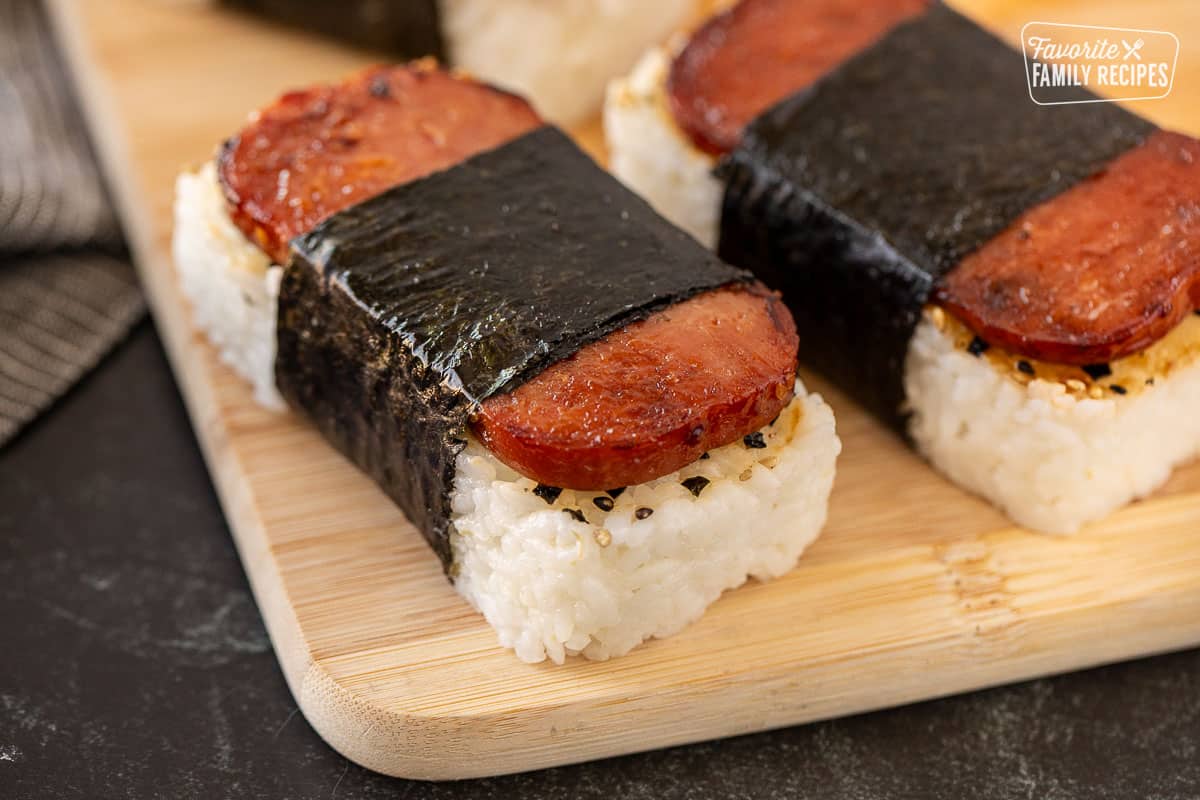
Easy Recipes to Try with Your Sushi Rice
Sushi rice is a key component of all kinds of sushi and popular dishes, including maki (traditional sushi rolls), nigiri, hand rolls, chirashi, sushi bowls and burritos, and or course, my kids’ favorite: Spam musubi. Here are a few of our favorite recipes where a good sushi rice is key:
Now that you’ve mastered the basics, what will you make next? Let us know in the comments below or tag us on Instagram @favoritefamilyrecipes and show us your creations! 🍣🍱
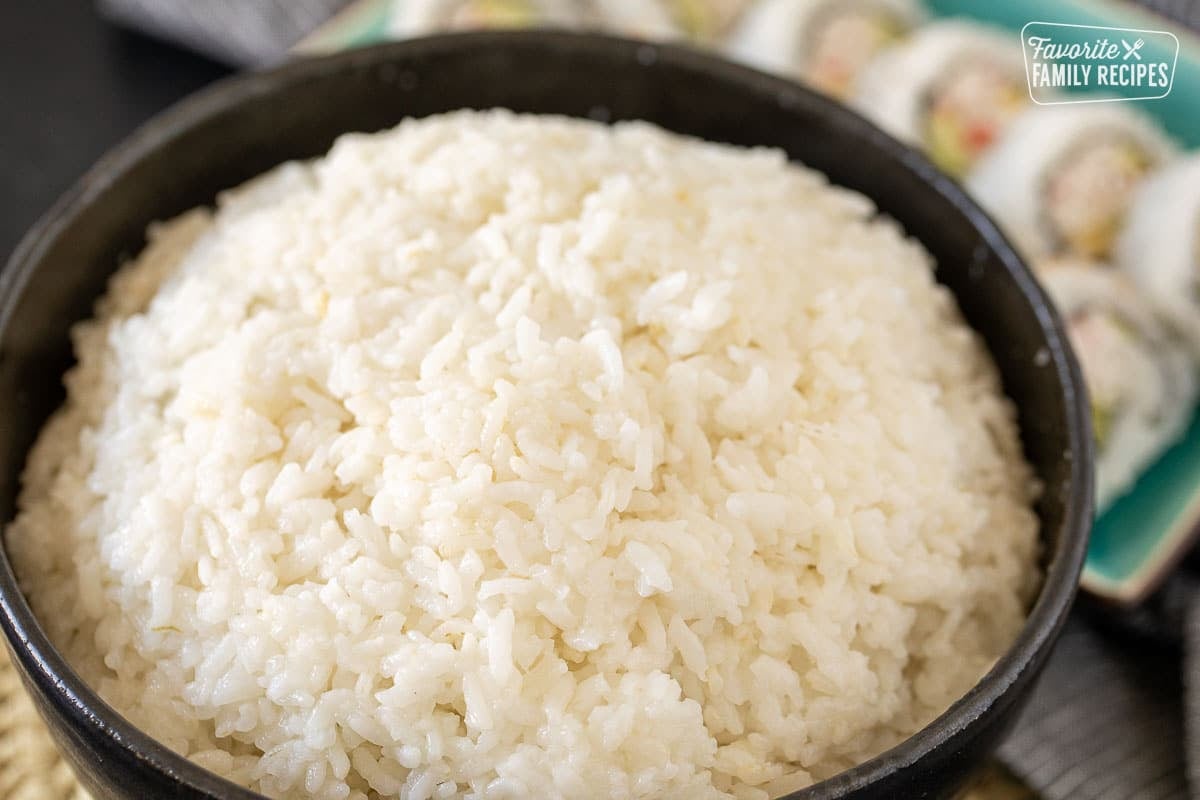
Sushi Rice Recipe
Ingredients
- 3 cups sushi rice (It should say "sushi rice" right on the bag. Calrose rice works okay if you can't find sushi rice.)
- 3 cups water
- 1 piece Kombu (dried kelp) (2×2" square, optional)
- 1/4 cup Japanese rice vinegar
- 2 Tablespoons sugar
- 1 teaspoon salt
Instructions
- Place the rice into a mixing bowl and cover with cool water. Swirl the rice in the water with your hand, pour off and repeat 2-3 times or until the water is clear. Rinse a few more times. After the rice is rinsed, let the rice drain in a colander or strainer for 1 hour.
- After the rice has drained, put the rice in the rice cooker with the 3 cups of water, cover, and start. If you are using kombu (optional), add it to the rice and water before cooking and allow it to cook along with the rice.If you don't have a rice cooker place rice and water in a heavy saucepan over medium-high heat; bring just to a boil, reduce heat to low and simmer, covered, for 15 minutes. Turn off heat and let rice rest, covered, for 15 additional minutes.
- While rice is cooking, prepare the vinegar mixture. In a small saucepan over medium heat, combine rice vinegar, sugar, and salt. Heat mixture just until the sugar dissolves (do not let it boil). Remove from heat and let cool to room temperature.
- When the rice is done cooking, gently spread out the rice over a cookie sheet. Evenly distribute the cooled vinegar mixture over the rice. You may not need all of the vinegar mixture. Just sprinkle it over the rice until it is lightly spritzed. Gently turn rice over from time to time with rice paddle or wooden spatula so that rice cools evenly. To speed things up, fan the rice each time you turn it over. When rice has cooled to room temperature, it is ready to use for sushi!
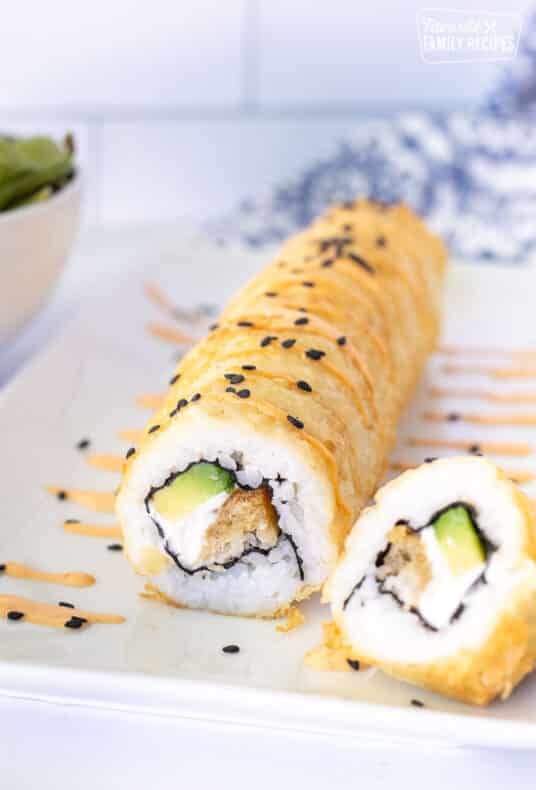
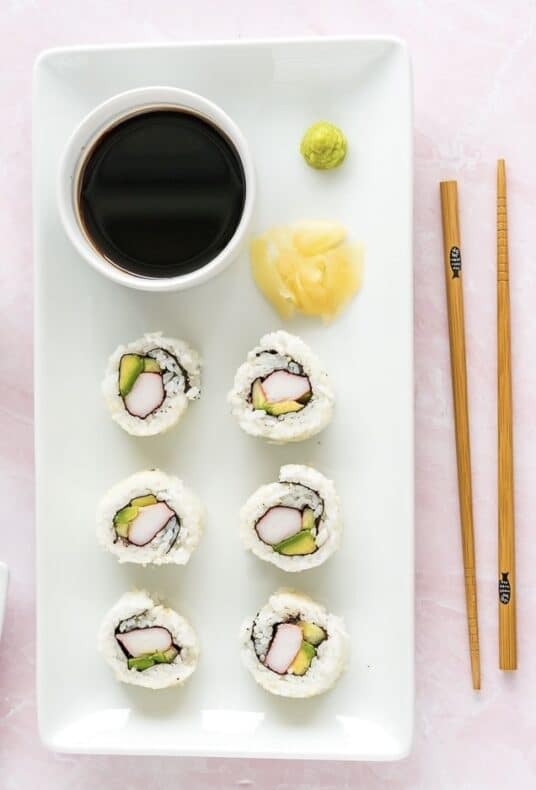
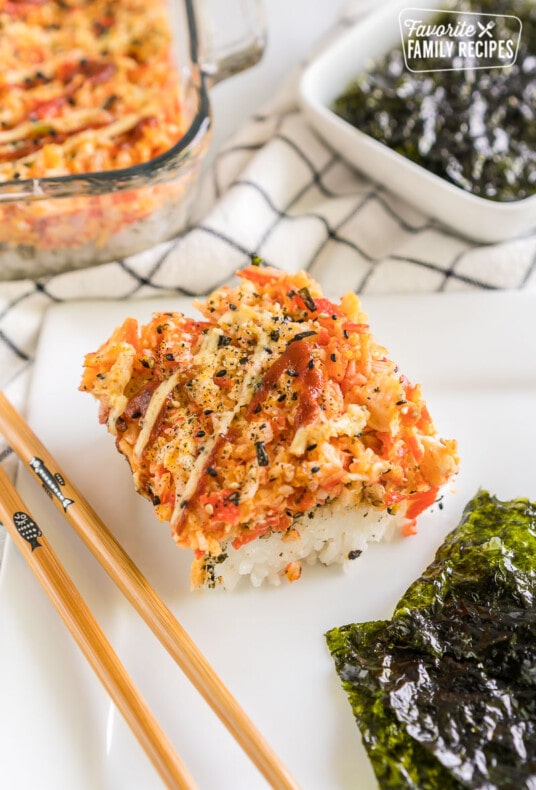
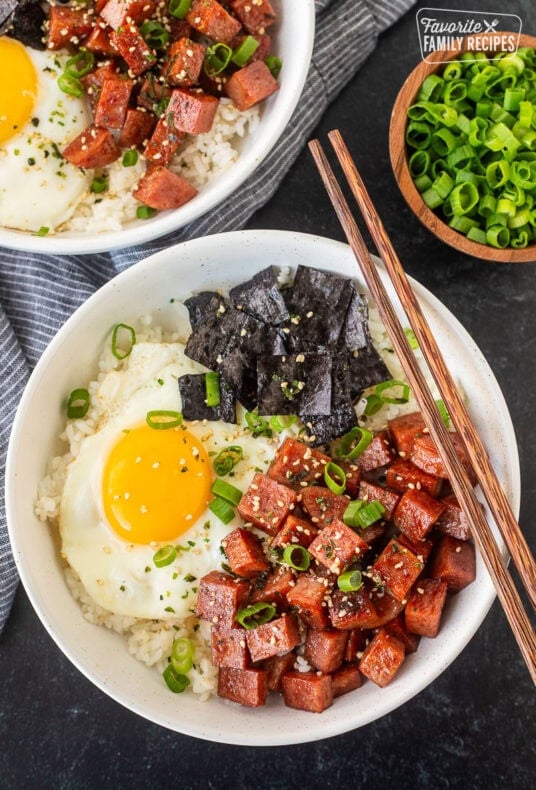
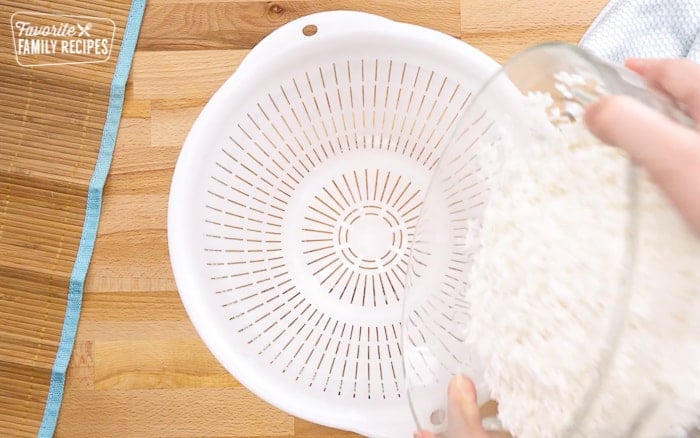
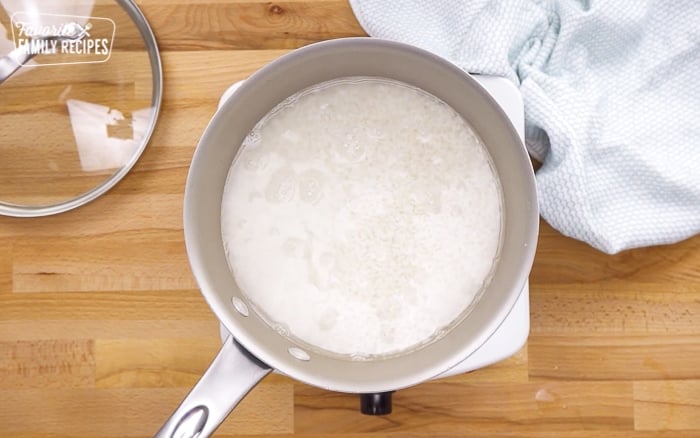
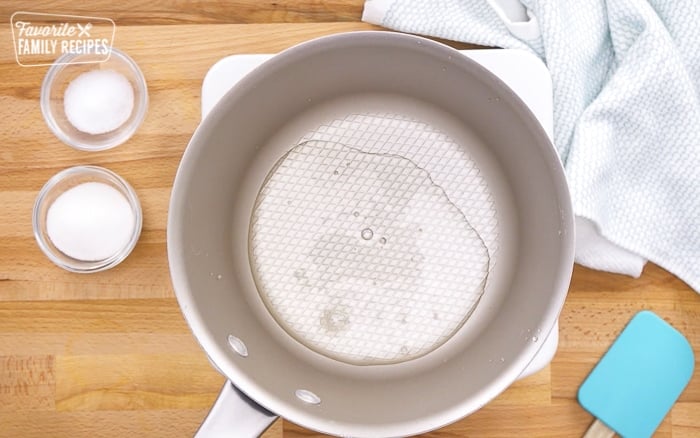

I just wanted to add that the Nutritional section lacks the serving size. I’m always concerned about the sodium content of foods so it’s important to know if 400mg is for 1/4 c, 1/2 c or 1 c serving size.
I actually need to fix this on the recipe. This recipe makes 6 to 7 1/2 cups of rice and 1 serving = 1/2 cup so there is 12-15 servings. Hope this helps!